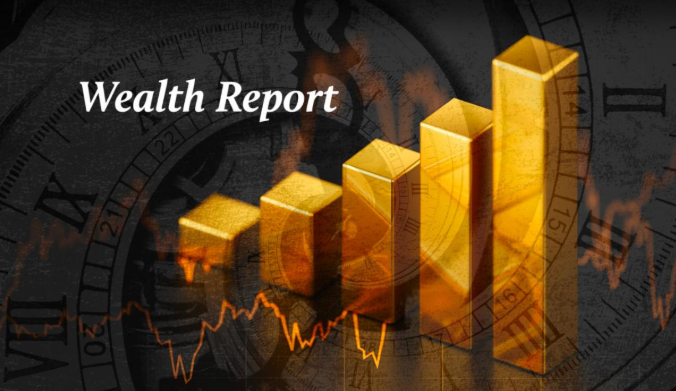For most of modern economic history, tariffs have been viewed as levers of last resort, tools used sparingly to address acute imbalances or assert national security interests. Yet over the past decade, tariffs have reemerged as a recurring theme in U.S. economic policy. Whether driven by geopolitical rivalry, domestic political appeal, or shifting views on global supply chains, the growing use of tariffs presents significant implications for investors, business owners, and the broader political economy.
Understanding this evolving environment is essential for long-term wealth planning. Protectionism is not just a political soundbite, it is a force that influences corporate margins, consumer prices, monetary policy, and investment strategy in complex and durable ways.
A Shift in Trade Philosophy
For much of the post-World War II era, the global consensus among advanced economies favored liberalized trade. The assumption was that fewer barriers would foster efficiency, reduce costs, and raise global prosperity. U.S. policy reflected this consensus through decades of trade agreements, tariff reductions, and expanding global supply chains.
That consensus began to fracture in the wake of the 2008 financial crisis. A growing number of policymakers, particularly in the U.S., began pointing to trade deficits, manufacturing decline, and geopolitical dependence on adversarial regimes (most notably China) as costs of globalization. As a result, tariffs, once rare, became more common. The U.S. imposed sweeping tariffs under the Trump administration, and while the Biden administration has taken a more targeted approach, many of those measures remain in place.
In fact, both leading U.S. presidential candidates for 2024 (and now 2028) have publicly supported maintaining or expanding tariffs, indicating that protectionism now commands bipartisan political traction.
Tariffs as Economic Tools and Weapons
A tariff is essentially a tax on imports, meant to increase the cost of foreign goods and incentivize domestic production. But while simple in design, tariffs are blunt in practice. They often spark retaliation, distort supply chains, and impose hidden costs on domestic consumers and businesses.
For example, U.S. tariffs on Chinese goods in recent years have led to widespread supply chain reshuffling, with companies rerouting production to Vietnam, Mexico, or other lower-tariff jurisdictions. While this reduces dependency on a single foreign power, it introduces new costs and frictions. U.S. manufacturers, especially in sectors like construction, automotive, and electronics, have faced higher input costs. In many cases, those costs are passed to the end consumer contributing incrementally to inflation.
Tariffs can also strain relations with allies, particularly when imposed unilaterally. Trade is increasingly being used as a geopolitical tool, but weaponizing commerce whether to influence diplomatic behavior or limit military advancement comes with economic blowback.
Implications for Investors and Entrepreneurs
From an investor’s standpoint, the return of tariffs and the normalization of protectionism calls for a strategic recalibration. While broad-market impacts can be hard to isolate, certain sectors and asset classes are more exposed than others.
1. Margin Pressures in Manufacturing and Retail:
Companies heavily reliant on global inputs particularly in low-margin industries may experience declining profitability as tariffs eat into cost structures. Investors should pay attention to sourcing footprints and exposure to vulnerable trade routes.
2. Opportunities in Domestic Substitution:
Sectors like U.S. steel, advanced manufacturing, semiconductors, and critical minerals may benefit from reshoring trends and tariff-driven investment. However, these opportunities often come with higher volatility and are tightly linked to evolving legislation and subsidies.
3. Inflation and Interest Rates:
Persistent tariffs can reinforce inflationary trends, which in turn affect interest rate expectations. While the Federal Reserve doesn’t directly respond to tariffs, second-order effects (higher prices, slower growth) can complicate its policy path especially in an already uncertain rate environment.
4. Business Owner Strategy:
Entrepreneurs with exposure to international supply chains should revisit vendor diversification, cost modeling, and client pricing strategies. Now may also be the time to consider domestic capital investment, particularly in industries supported by government incentives.
A Structural Shift, Not a Temporary Phase
The return of tariffs should not be seen as a passing phase or an anomaly of populist politics. It reflects a deeper structural shift in how policymakers and the electorate view the relationship between economic openness, national security, and social stability.
Even multinational corporations, once champions of globalization, are increasingly positioning themselves for a world of regional trade blocs, politically driven sourcing decisions, and less predictable access to global markets. In this environment, agility and foresight are paramount.
Planning Considerations for Wealth Holders
For high-net-worth individuals and families, tariffs may not directly affect portfolio returns in the short term but they shape the backdrop against which capital is deployed and preserved.
Here are a few considerations:
1. Reevaluate sector allocations in light of geopolitical exposure and trade friction risk.
2. Watch for legislative signals—such as proposed tariffs, reshoring subsidies, and tax credits which often precede shifts in market behavior.
3. Consider private investments in domestic infrastructure, supply chain innovation, and energy resilience as long-term hedges.
4. Engage with advisors on how global trade dynamics may affect estate, tax, or business continuity planning especially for those with cross-border ties.
Tariffs are more than just taxes on goods. They are economic signal indicators of how a nation is choosing to balance efficiency, security, and sovereignty. For wealth holders, understanding the deeper forces behind protectionist policy is key to navigating an increasingly complex financial landscape.
As global trade patterns evolve, so too must our strategies for investing, planning, and advising. Tariffs may not dominate daily headlines, but their ripple effects will continue shaping wealth decisions for years to come.

